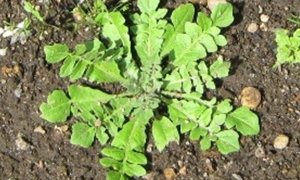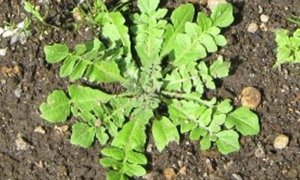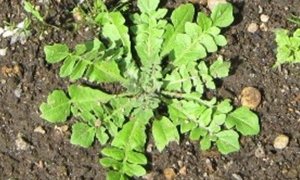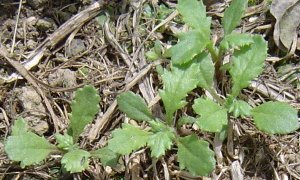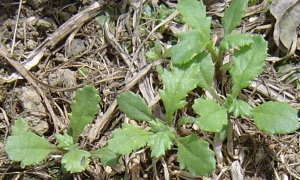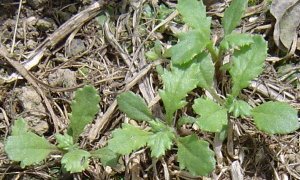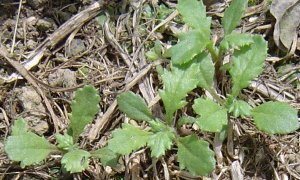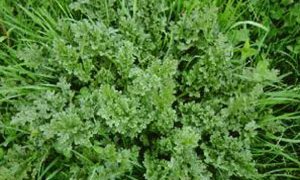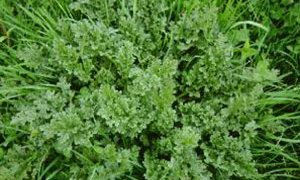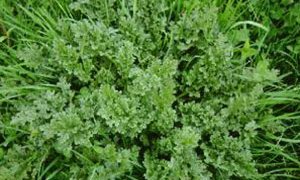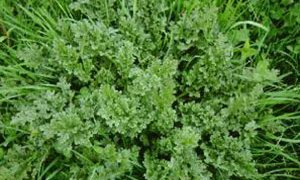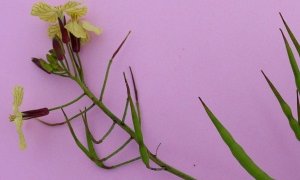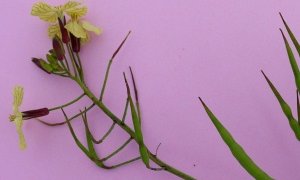Botanical name: Sonchus oleraceus
Family name: Asteraceae
Overview
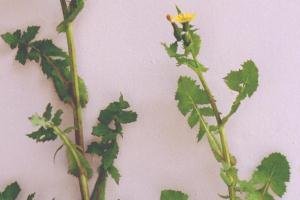
Sow thistle.
Sow thistle is commonly found in crops, gardens and waste areas. As with many members of the Asteraceae family, it starts life as a rosette, and then bolts to form an upright flower stem.
Sow thistle is an annual weed that can establish at any time of the year. It is also known as puha, and is eaten by some people as a vegetable. Although known as a food favoured by some Māori people and having an alternative Māori name, it isn’t native to New Zealand, as it comes from Europe. The original puha eaten by the Māori before colonisation was Sonchus kirkii, but this is now not very common in New Zealand since all of the land changes that have occurred since colonisation by Europeans. Hence the move to make similar use of this closely related and much more common species.
As sow thistle can grow up to 1 m tall, it can be quite a competitive weed. It gets its common name from being an attractive food for pigs, and for having a vague similarity in appearance while young to thistles, though doesn’t have spines like true thistles.
Distinguishing features

Sow thistle flower.
The sow thistle has quite a succulent stem when it flowers, and the foliage oozes a milky sap when cut. It is most likely to be confused with a closely related species called prickly sow thistle (Sonchus asper), which looks very similar but has more prickly leaves than the sow thistle.
The lobes in each leaf of prickly sow thistle do not tend to cut in so close to the midrib of the plant as in sow thistle leaves. It could also perhaps be confused with hawksbeard due to its leafy flower stem with yellow flowers. Although not as prickly as Sonchus asper, sow thistle does have a more prickly leaf margin than hawksbeard.
The midrib underneath the sow thistle leaf usually has no hairs, whereas the midrib of hawksbeard leaves often does have hairs. The shape of the flower head tends to differ as well, and the leaves of young sow thistle plants tend to have a large terminal lobe, unlike hawksbeard. As with the prickly sow thistle and hawksbeard, the sow thistle has fluffy white pappus attached to its seeds which helps them blow around in the wind.
Control
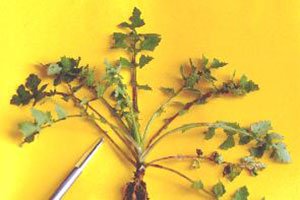
Sow thistle shown next to a pen for size reference.
There are no particular control problems with sow thistle, being susceptible to cultivation and most herbicides. It can be a problem in crops that use trifluralin, however, as it is resistant to this herbicide.
Similar species
Black nightshade
Black nightshade grows berries when mature and has a purplish tinge on its stem and foliage.


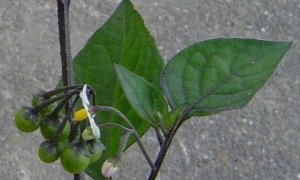

Broad-leaved fleabane
Broad-leaved fleabane starts as a rosette and then grows tall upright flower stems.
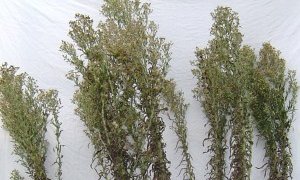

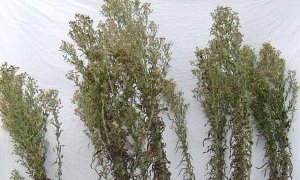

Hawksbeard
Hawksbeard starts as a flat rosette then produces branched leafy stems with yellow flowers.
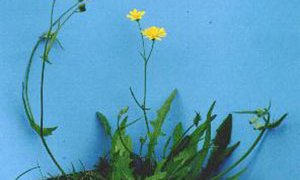
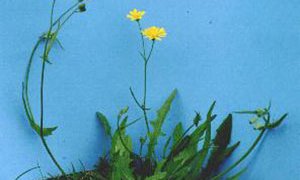


Shepherd's purse
Shepherd's purse starts as a rosette and then grows an upright flower stem with heart-shaped seed pods.

